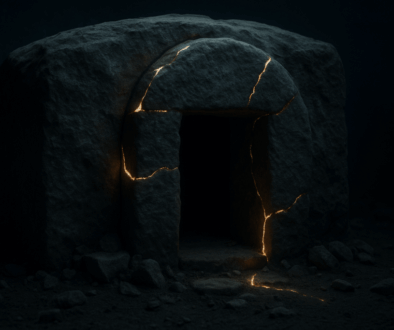The Forever Mindset vs. The Here and Now Mindset: Finding Biblical Balance
The Bible presents a profound paradox within life: the tension between the finite and the infinite, the eternal and the present moment, the Forever Mindset and the Here and Now Mindset. On one hand, scripture urges us to live with eternity in view, shaping our lives around ultimate truths and lasting significance. On the other, it calls us to fully inhabit the present, honoring each moment as sacred and filled with divine presence.
Yet both perspectives carry challenges. Focusing too much on the eternal can lead to detachment from life’s beauty and personal growth. Focusing solely on the present can result in short-sightedness and neglect of deeper purpose.
What if the most authentic spiritual path is not choosing between them but learning to integrate both? With such a profound tension, is true balance even possible?
“You have made us for yourself, O Lord, and our hearts are restless until they rest in You.” — Augustine of Hippo
This post explores how the Bible, alongside the wisdom of great philosophers, invites us to live in the mystery of both—a life where the finite is made meaningful by the infinite, and the infinite is revealed through the finite.
The Forever Mindset: Living with Eternity in View
The Forever Mindset emphasizes the eternal consequences of our actions and the reality that life on earth is temporary. It encourages believers to focus on ultimate truths and God’s eternal promises.
Key Biblical Themes of the Forever Mindset:
- Eternal Perspective Beyond This Life:
“For our light and momentary troubles are achieving for us an eternal glory that far outweighs them all.” (2 Corinthians 4:17)
Life’s difficulties are seen as temporary, with a greater spiritual reality beyond our current experiences.
- Living with Long-Term Impact:
“Do not store up for yourselves treasures on earth… But store up for yourselves treasures in heaven.” (Matthew 6:19-20)
The Bible urges us to look beyond material gain and focus on values that endure eternally.
- Spiritual Growth and Endurance:
“I press on toward the goal for the prize of the upward call of God in Christ Jesus.” (Philippians 3:14)
This mindset encourages perseverance, even during trials, knowing that faith has lasting significance.
Potential Risks of the Forever Mindset:
- Detachment from the Present: Focusing too much on the future can lead to neglecting the beauty and importance of the present moment. How can you be grateful without being present to it?
- Spiritual Bypassing: Deferring personal growth by focusing on eternity can become a way to avoid emotional struggles.
What we resist persists. If we avoid uncomfortable emotions now, what makes us think we will face them differently in the future?
The Here and Now Mindset: Embracing the Present Moment
The Here and Now Mindset emphasizes being fully present, valuing today’s actions, relationships, and personal growth as sacred. Scripture repeatedly calls believers to live with mindfulness and gratitude, as the present moment is where God meets us.
Key Biblical Themes of the Here and Now Mindset:
- The Sacredness of the Present:
“This is the day the Lord has made; let us rejoice and be glad in it.” (Psalm 118:24)
Every day is seen as a divine gift, encouraging gratitude and mindfulness.
- Taking Moral Action Now:
“Do not boast about tomorrow, for you do not know what a day may bring.” (Proverbs 27:1)
Life’s unpredictability calls for moral integrity in the present.
- Jesus’ Teachings on Daily Presence:
“Therefore do not worry about tomorrow, for tomorrow will worry about itself.” (Matthew 6:34)
Jesus emphasizes trust in God while remaining grounded in the present moment.
Potential Risks of the Here and Now Mindset:
- Short-Term Thinking: Focusing only on the present may lead to neglecting the long-term spiritual impact of our choices.
- Lack of Vision: Without an eternal perspective, it can be easy to lose sight of purpose and moral accountability.
“The present alone is our happiness. Eternity is in the now.” — Meister Eckhart
A Foundational Struggle: The Tension Between the Eternal and the Present
The tension between the eternal and the present can also be described as the tension between the infinite and the finite—a paradox that has captivated philosophical and spiritual thinkers for centuries.
These ideas echo biblical wisdom, where the call to fix our minds on eternal truths (2 Corinthians 4:17) coexists with Christ’s teaching to focus on the present (Matthew 6:34).
Plato: The Finite as a Shadow of the Infinite
Plato saw the finite world as a shadow of the infinite. Wisdom, he taught, comes from orienting the soul toward eternal truths while still engaged with the present world. The visible world is but a reflection of higher, unchanging realities.
Kierkegaard: The Leap of Faith
Søren Kierkegaard deepened this tension, describing the self as caught between:
- Everyday Experience (the finite)
- Longing for God and Ultimate Meaning (the infinite)
True spiritual growth, he argued, requires confronting both and making a leap of faith—where the finite self surrenders to the infinite, fully embracing both human limitations and divine mystery.
Heidegger: Mortality as a Gateway to the Infinite
Martin Heidegger approached this tension through existential philosophy, describing human life as defined by finitude:
- We are fundamentally beings-toward-death, aware of our mortality.
- Yet, paradoxically, this awareness of limitation opens us to the infinite horizon of Being—a profound confrontation with existence itself.
The Shared Message:
👉 The infinite gives depth to the finite, and the finite brings meaning to the infinite.
The most authentic and wholehearted way of living comes from holding both realities together—being fully present while mindful of the eternal.
“The infinite is not beyond the finite but its very ground.” —Paul Tillich
Bringing Both Mindsets Together: Biblical Harmony
Rather than opposing each other, the Forever Mindset and the Here and Now Mindset work best when held in balance. Scripture calls us to live with both eternity and the present in view:
- Eternal Awareness Shapes Present Actions:
“Whatever you do, work heartily, as for the Lord and not for men.” (Colossians 3:23)
Keeping eternity in mind can give greater meaning to our daily tasks, reminding us that small actions can have lasting impact.
- Being Present Reflects Eternal Values:
“The kingdom of God is within you/in your midst.” (Luke 17:21)
Jesus taught that the kingdom of God isn’t just a future reality—it’s unfolding here and now. Living presently can embody eternal truths like compassion, justice, and grace.
- Balancing Time and Timelessness:
“Teach us to number our days, that we may gain a heart of wisdom.” (Psalm 90:12)
This verse beautifully integrates both mindsets: Awareness of life’s brevity inspires us to live with purpose.
“The self cannot belong to either finitude or infinity alone—it exists only by relating itself to both.” —Søren Kierkegaard
Practical Ways to Integrate the Forever and Here and Now Mindsets
Understanding the balance between eternity and the present is not just an intellectual exercise—it’s a practice that can profoundly shape how you live each day. Here are ways to explore and apply this balance in your spiritual life:
- Prayer: Accessing the Infinite with Your Finite Self
Prayer is a powerful practice where the finite self reaches toward the infinite. It reminds us that we are both limited and yet invited into a relationship with the divine.
- Try this: Begin your prayers by acknowledging both realities—God’s eternal presence and your current struggles or joys. Example: “God, you are eternal, yet you meet me here in this moment.”
- Why it Matters: Prayer teaches humility and perspective, aligning our hearts with both present realities and eternal truths.
- Mindfulness: Being Fully Present Without Attachment
Mindfulness anchors us to the here and now, but it also teaches us not to cling to passing moments. This practice mirrors biblical teachings on contentment and trusting God for the future.
- Try this: Spend five minutes each day practicing breath awareness while meditating on a verse like “Be still, and know that I am God.” (Psalm 46:10)
- Why it Matters: Mindfulness helps us stay grounded while keeping the bigger picture in mind.
- Embrace Your Journey: Resist Extremes and Find Balance
Many belief systems overemphasize one mindset to the exclusion of the other—
- Some cults or radical groups become obsessed with eternity, ignoring the realities of life.
- On the other hand, hedonistic philosophies focus solely on immediate pleasure, dismissing eternal truths.
Healthy faith integrates both.
- Try this: Journal about the balance you’re currently living. Do I focus more on long-term goals and faith or on being fully present in the now?
- Why it Matters: Recognizing where you lean helps you avoid spiritual imbalance and extremes.
- Practice Both: Hold Eternity and the Present Together
Growth happens when we practice both mindsets intentionally. Explore eternity and presence side by side in your reflections.
- Try this:
- Open your Bible and reflect on Psalm 19:1 (“The heavens declare the glory of God”) to meditate on God’s vastness.
- Then reflect on James 4:14 (“You are a mist that appears for a little while”) to embrace the brevity of life.
- Why it Matters: Holding both truths can foster humility, gratitude, and a deeper sense of purpose.
- Be Patient: This is a Lifelong Practice
Trying to understand and embody both the finite and the infinite is not a one-time realization—it’s a lifelong journey.
- Try this: When you feel overwhelmed by the tension, repeat a simple mantra like: “I am here. I am held. I am becoming.”
- Why it Matters: Growth takes time. The tension itself is part of the spiritual path.
“Being-toward-death gives authenticity to life.” —Martin Heidegger
Final Thought: Embrace the Mystery
The tension between the eternal and the present isn’t meant to be fully resolved—it’s meant to be lived. The more you stay present while keeping your heart open to eternal truths, the richer and more meaningful your spiritual life will become.



